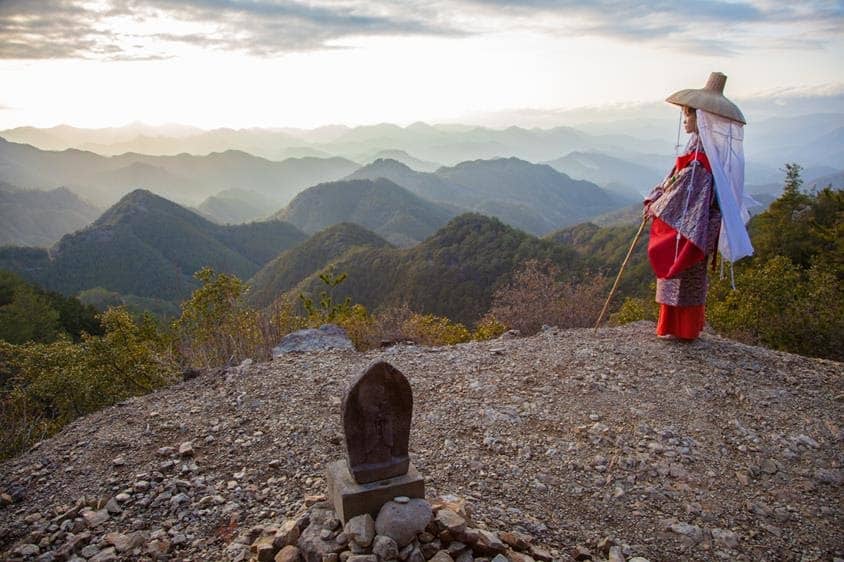Kyoto-based adventure operator Oku Japan, which offers a wide range of guided and self-guided walking & trekking itineraries across this island nation, is again seeing huge demand as it heads into 2024.
“Visitors rushed back to Japan in droves in 2023, and that momentum continues,” says Hiroshi Kawaguchi, General Manager at Oku Japan. “We are encouraging people to book as early as possible, especially along the Kumano Kodo and Nakasendo Trails, where visitor numbers are carefully controlled and there’s a cap on accommodations in these regions as a way to help preserve the natural environment and local culture from the effects of overtourism.”
“At Oku Japan, the main part of our itineraries is off the beaten path, where we look to drive tourism dollars deeper into the smaller communities as a way to spur chiho-sosei, or regional revitalization,” continues Kawaguchi. “It is important for us to not only provide our guests with authentic experiences but to make sure our partners in the community benefit as well to ensure the distinct cultures and traditions of each area remain intact.”
With that in mind, Oku Japan is highlighting just a few of the many amazing experiences that await and the trips you can take to enjoy a more immersive and authentic journey.
 |
| Yunomine Onsen |
Here are 10 uniquely Japanese experiences to consider on your next visit:
Soak in Healing Onsen
There is something so magical about soaking in the luxuriously hot water of an outdoor onsen, or hot spring, as the snow falls around you, in fact, it is one of our favorite winter activities in Japan (the snow monkeys agree!). Combine it with a stay in a traditional ryokan (Japanese-style inn) and you’ve got the makings of a truly authentic getaway.
Recommended trip: As Oku looks to drive tourism dollars deeper into the communities its trips visit, this means they include stays at many smaller family-run ryokans. The eight-day Winter Nakasendo Trail guided tour includes all the above plus the bonus of snowshoeing along a portion of the trail.
Attend a Japanese Matsuri
There are so many matsuri, or festivals, to choose from, no matter the season. An integral part of Japanese culture, matsuri offers a way to immerse yourself in the country’s rich history. While summer is when most are held – take for instance the Gion Matsuri (July) in Kyoto, which is perhaps Japan’s best-known festival, and possibly the largest as well – you can still find other unique festivals at other times of the year. This includes Kyushu’s colorful Yatsushiro Myōken Festival in November. Spread over two days, it is one of the oldest traditional festivals in the country, dating back to the 14th century.
Recommended trip: While this trip doesn’t have a departure that overlaps with the Yatsushiro Myōken Festival, for a deep dive into the fascinating island of Kyushu – known as the cradle of Japanese civilization with several locations on the island being connected with the Japanese creation myths that inspired the Yokagura dances in Takachiho – the 15-day Land of Fire Kyushu guided trip is a great place to start.
Drink and Dine at an Izakaya
There is no shortage of amazing culinary experiences in this food-loving country, but there’s nothing quite like eating and drinking at an izakaya, which is often translated into English as a Japanese-style “tavern” or “gastropub.” Described as a “quintessential Japanese experience,” these typically informal establishments are where locals go to eat and drink in a relaxed and cheerful environment. But don’t let the informality fool you, at many izakayas – whether humble or high-end – the food is the star.
Learn from a Master
With its rich and well-preserved culture brimming with wonderful, colorful traditions, Japan offers visitors myriad unique experiences to learn a craft – from making miso paste to trying your hand at pottery making – directly from a master.
Stop and Smell the Ume
People the world over are familiar with the famous Japanese cherry blossoms, or Sakura, and the many festivals built around these lovely pink and white flowers. But if you visit around mid-February, you’ll be in Japan for the blooming of another beautiful tree – the ume or plum tree. While they can be pink in color, they often bloom in vibrant fuchsia colors. If you visit after the hanami (cherry blossom viewing) season, Japan offers a full floral year of blooms – tulips, shibazakura, wisteria, hydrangea, irises, roses, spider lilies, camellia, and more. In autumn, the landscape transforms with brilliant fall colors.
Explore the Japanese Countryside
While Japan’s cities are electric and always enticing, venturing out into the country’s more rural areas will bring rewards beyond measure. Japan is a hiker’s paradise and if it’s a truly off-the-beaten path escape you crave, northeastern Tōhoku’s Michinoku Coastal Trail offers 1,000 kilometres of adventure.
Sample the World’s Finest Sushi and Sashimi
It comes as no surprise that Japan’s sushi and sashimi offerings are on a level of their own. For anyone who has had the pleasure of watching the film Jiro Dreams of Sushi, about revered sushi chef Jiro Ono and his famed Tokyo restaurant, this country is where you go for the best of the best inari, buri, hirame, toro, and so much more. While there are myriad restaurants serving up the freshest of catches across the country, the northern island of Hokkaido is famous for some of the best seafood in Japan (and that’s saying something!), along with a unique fishing culture that invented the Robatayaki style of cooking on an open grill.
 |
| Learn about the closed world of a maiko, or apprentice geisha. |
Glimpse Into the Closed World of a Maiko
While in Kyoto, rather than following the crowds to the many popular (and amazing, though oftentimes crowded) sights, get off the main thoroughfares and see a different side of the city – its machiya houses, small neighborhood shrines, local temples, craft shops, and more. There’s also a chance you’ll see a maiko – or apprentice geisha – out and about, dressed in traditional garb, going about her day. It is a special opportunity to see and learn about this fascinating but closed world where young women carefully study centuries-old traditions of dance and music, and in doing so help preserve this rich culture.
 |
| Follow in Kobo Daishi's footsteps across the Kazurabashi, located in Shikoku's Iya Valley |
Stay at a Shukubo
Though Shinto is Japan’s native religion, Buddhism arrived in Japan via China and Korea in the 6th century and today roughly two-thirds of the Japanese population consider themselves Buddhists. For a taste of traditional Japanese Buddhist life, there’s no better experience than spending a night or two at a shukubo or temple lodging. Accommodations are on the rustic side, but the immersive cultural experience makes for an unforgettable and fascinating adventure.
Follow in the Footsteps of History
When it comes to hiking opportunities, taking in the great outdoors can be coupled with an immersion in history when you travel along one of Japan’s ancient pilgrimage routes. There’s the Kumano Kodo, a region comprised of branching pilgrimage routes that stretch into varying corners of the Kii Peninsula. The pilgrimage here dates back more than 1,000 years, with one of the trails – the Nakahechi – stretching from Takijiri on the western edge of the peninsula to Shingū on the eastern coast. There’s also the Nakasendo Trail, which connected Kyoto and Edo-period Tokyo. Stretching 534 kilometers, the trail features some of the best-preserved post towns – including Magome, Tsumago, and Narai – which have provided rest to weary travelers for centuries. And finally, there’s the Shikoku 88 Pilgrimage, found on the island of Shikoku, this trail connects 88 Buddhist temples, and the full walk covers more than 1,000 kilometers. This spiritual journey follows in the footsteps of Kobo Daishi, who reached enlightenment in these isolated mountains and decided to devote his life to Buddha.
To learn more about Oku Japan’s full line-up of year-round self-guided and guided group tours, please visit http://www.okujapan.com/.



























Ohhh thanks for sharing this beautiful blog
ReplyDeleteYay! There's more in Japan. I hope someday I can visit these places.
ReplyDelete